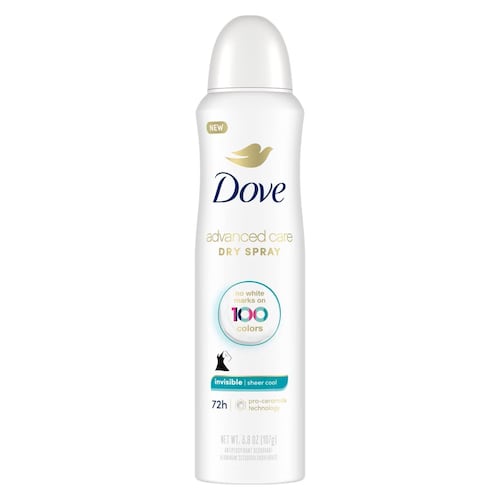As the weather gets warmer, Georgia's serpentine wildlife becomes more active. The state is home to over 40 snake species, including six venomous species. Whatever your feelings toward the slithery creatures, it's important to be able to recognize which species pose a threat.
» RELATED: It's the season for snakes: When should you worry?
In fact, the Georgia Poison Center reported that in 2017, the state received about 40 percent more calls than in 2016, a year when Georgia experienced its highest number of snakebite calls recorded with 466 reported bites. Snakebites were also up among pets, something to keep in mind during the summertime.
However, out of the 10,000 snakebites per year in the U.S., only around 12 to 15 bites result in death, according to the Georgia Department of Natural Resources. Snakes will not bite unless threatened; and in nearly half of all bites by venomous snakes, no venom is injected.
» RELATED: Snakes are most attracted to these kinds of Atlanta homes
In the event of a snakebite, call 911 immediately, and try to get a picture of the snake to be able to identify it (without getting too close). To report snakebites and obtain more information, call the Georgia Poison Center toll-free at 1-800-222-1222 or locally at 404-616-9000. More information on how to prevent snakebites also can be found on the Georgia Poison Center's website.
Check out this photo gallery on ajc.com to learn how to differentiate the venomous species from the rest.
» RELATED: Photos: Georgia's venomous snakes and how to identify them
Also, use these descriptions from the Georgia DNR’s Wildlife Resources Division to help determine if a snake is venomous:
Copperheads: Most range from 2 to 4 feet in size and tend to be tan, light gray, or rusty orange colored. They have distinct darker-colored hourglass or "Hershey kiss" shaped markings down the entire length of their body. Juveniles have a bright-yellow tail tips. Found mostly in forested areas, both wet and dry, but persist in urban and suburban areas with vegetation as well.
Canebrake/Timber Rattlesnake: Usually range from 3 to 5 feet in length. All have a brown-to-black colored V-shape pattern down the back, but the background color ranges could be pink, tan, gray or olive. Tails are black-banded with a rattle. More commonly found in dry, wooded areas in the Coastal Plain, but can be found in small dens in the mountains.
» RELATED: Largest venomous snake in U.S. spotted swimming in waters off Florida Keys
Eastern Diamondback Rattlesnake: Colored shades of brown with darker brown diamond-shapes down its body. The diamonds are outlined by white or a light yellow color. They are the heaviest bodied and potentially longest snake in the state — and one of the most dangerous in the U.S. — as they can grow up to 7 feet long. However, most range from 3 to 5 feet in size. Found in a variety of dry and wet habitats. It has a brown and white banded tail with a rattle.
Pigmy Rattlesnake: The smallest rattlesnake as it rarely grows longer than 2 feet. Background color is usually tan or gray, or the occasional reddish or black. Patterned by light-edged dark blotches down its back, with one to three rows of dark spots on its sides. Sometimes a reddish stripe runs down the back. These have a poorly-functioning rattle, or no rattle at all. Found in wooded areas, low-lying sandhills and swamps.
Cottonmouth/Water Moccasin: These semi-aquatic snakes are often found in swamp-like habitats or along rivers and lakes. Most are around 3 to 4 feet in length, but can reach up to 6 feet. They have a wide range of coloration, which darken as they mature, but are characterized by dark bands running the length of their body over brown or olive backgrounds. They have light yellow underbellies and black undersides of their tail, while juveniles have a bright-yellow tail tips. You can see a dark band extending from their eye down the neck.
» RELATED: Here are tips on keeping a snake-free yard
Eastern Coral Snake: While these brightly colored striped snakes are very similar in color to the nonvenomous Scarlet Kingsnake, remember the old saying "Red touches black, venom lack; red touches yellow, kills a fellow." They are slender-bodied, and rarely grow longer than 2 to 3 feet long. Found in a variety of habitats including wooded and sandy areas, but not in extensive wetlands. It has short, fixed fangs at the front of its mouth and has a rounded black head.
It's important to be able to identify which of Georgia's 41 snake species are venomous because it is a misdemeanor, punishable by up to a $1,000 fine and a year in jail, to possess or kill a nonvenomous snake. It is also illegal to disturb or destroy the dens, holes or homes of both venomous and nonvenomous snakes. And without a proper permit, it is illegal to keep a native nonvenomous snake as a pet.
» RELATED: Veterinarians say snakebites are up among pets
While snakes are helpful in keeping mouse, rat and other pest levels down because of their eating habits, it is not always desirable to have snakes around your home, especially if you spend a lot of time outside or have kids who do.
And it's actually a lot easier to keep snakes away than most people think, said Erica Young of Urban Wildlife Control in Roswell.
First and foremost, if chipmunks, rats and other rodents can find their way into your house, barn or crawl spaces, so can snakes, she said. It's important to have a rodent control program in place so that snakes have to go elsewhere to find food.
Snakes also seek shelter around ivy and piles of rocks, firewood and brush. By eliminating those things from your property, you'll be giving snakes fewer places to hide.
About the Author
The Latest
Featured



